Overview
Choosing the right vegetation management software involves evaluating key criteria such as scalability, user-friendliness, customization options, support and training, and cost-effectiveness. The article emphasizes that these factors are critical for ensuring the software aligns with organizational goals and enhances operational efficiency, ultimately leading to improved plant care and safety outcomes.
Introduction
In the realm of utility management, the effective oversight of vegetation has emerged as a critical component in ensuring operational safety, compliance, and efficiency.
Vegetation management software stands at the forefront of this endeavor, offering a suite of features designed to streamline processes, reduce costs, and enhance decision-making.
As organizations grapple with the complexities of managing vegetation in relation to infrastructure, understanding the key benefits and features of such software becomes essential.
From advanced mapping capabilities to the integration of artificial intelligence and drone technology, these tools are revolutionizing how companies approach vegetation management.
This article delves into the myriad advantages of vegetation management software, criteria for selection, and the future trends shaping this vital sector.
Understanding Vegetation Management Software: Key Benefits and Features
Vegetation management software offers a variety of benefits that significantly improve operational efficiency, safety, and regulatory compliance. Key features that directors of land acquisition should prioritize include:
- Mapping and GIS Capabilities: These functionalities enable precise visualization of vegetation in relation to infrastructure, which is crucial for effective planning and management. By leveraging advanced GIS technology, organizations can achieve notable improvements, including annual cost savings of up to 21.7% and a return on investment of 74.1%.
- Data Analytics: This feature is crucial for evaluating plant growth trends, enabling proactive risk oversight and minimizing the chance of expensive outages. Significantly, companies that embrace data-driven visual intelligence can reduce plant care costs by up to 20%, with possible savings of 30% for unplanned power outages caused by trees, as emphasized in a study by General Electric.
- Integration with Existing Systems: Seamless communication with other operational tools is vital for maximizing the effectiveness of vegetation oversight strategies. This integration improves overall efficiency and ensures that all aspects of land oversight are interconnected.
- Mobile Accessibility: The capability to gather field information and refresh details in real-time is invaluable, particularly in dynamic environments where immediate decisions are necessary.
While these features enhance the effectiveness of plant care strategies, it is important to recognize the limitations encountered by the market, such as resistance to chemical herbicides, high implementation costs, and concerns regarding invasive species oversight and data privacy. Integrating these features into vegetation management software not only increases the effectiveness of plant care strategies but also directly aids in improved safety. This is especially important considering that 84% of tree-care fatalities are associated with contact with power lines, highlighting the necessity for effective practices to prevent such incidents.
Moreover, recent advancements in augmented reality (AR) and virtual reality (VR) technologies are paving the way for enhanced data collection and safety training within utility landscape oversight. The session titled "Into the Metaverse: How AR and VR Can Aid UVM Operations," led by Lawrence J. Kahn and Guillaume Riviere, examined how these technologies can improve operational efficiency and safety training for plant care teams. Such technological innovations can lead to greater operational efficiency, ultimately benefiting both your organization and the communities you serve.
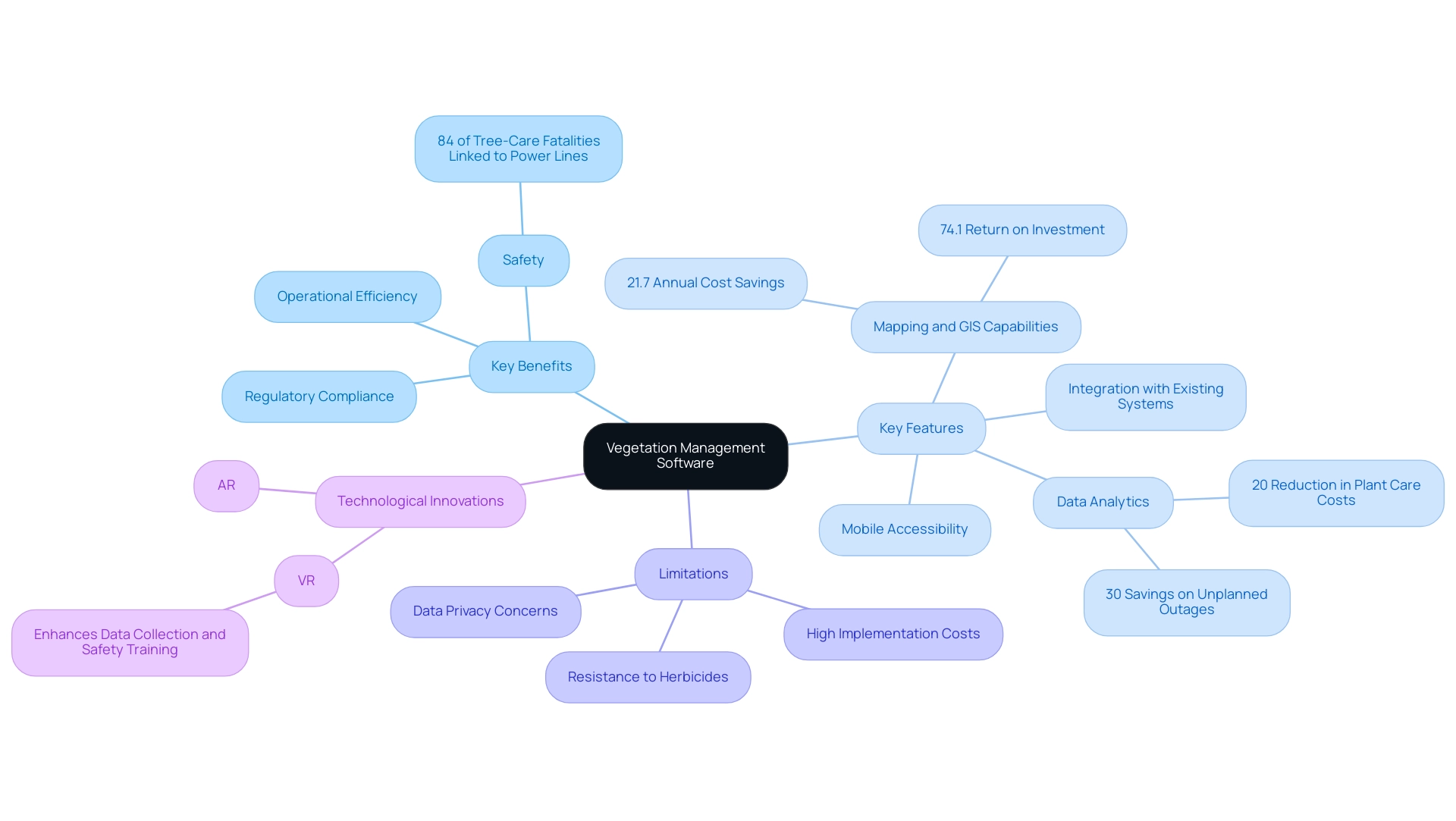
Criteria for Choosing the Right Vegetation Management Software
When selecting vegetation management software, it is crucial to evaluate the following criteria to ensure optimal performance and alignment with your organization’s goals:
- Scalability: The application must be capable of evolving alongside your organization, accommodating increasing data volumes and operational demands. For instance, during Tropical Storm Isaias, the number of trouble spots decreased from 24,217 without Enhanced Tree Trimming (ETT) to 15,173 with 75–100% ETT. This statistic underscores the importance of scalability in preparing your organization for future growth and enhancing the overall effectiveness of your vegetation management strategy.
- User-Friendliness: An intuitive interface is essential for minimizing training time and promoting user adoption. The easier the system is to navigate, the more efficiently your team can implement and utilize its capabilities, ultimately leading to improved operational outcomes.
- Customization Options: Look for programs that allow for tailored modifications to fit your specific workflows and reporting requirements. The case study on ETT effectiveness revealed significant differences in outage rates based on the level of ETT performed, emphasizing the need for customized solutions that can enhance operational efficiency and ensure that the system meets your unique needs.
- Support and Training: Adequate assistance and training resources from the provider are vital to maximizing the system’s potential. A strong support system can significantly reduce downtime and enhance user experience during implementation.
- Cost-Effectiveness: Assess the total cost of ownership, which includes licensing, maintenance, and potential upgrades. Ensuring that the software fits within your budget is essential, as highlighted by AiDash's initiative to reduce costs by 20% while improving reliability by 15%. This balance between cost and functionality is essential for effective plant care.
Furthermore, as Emmanouil Anagnostou points out in his work, "A Statistical Framework for Evaluating the Effectiveness of Plant Control in Reducing Power Outages Caused during Storms in Distribution Networks," assessing the effectiveness of plant control is essential for reducing outages during severe weather events.
By following these criteria, organizations can make informed choices when selecting vegetation management software, which will ultimately improve their operations and enhance resilience against challenges posed by extreme weather events.
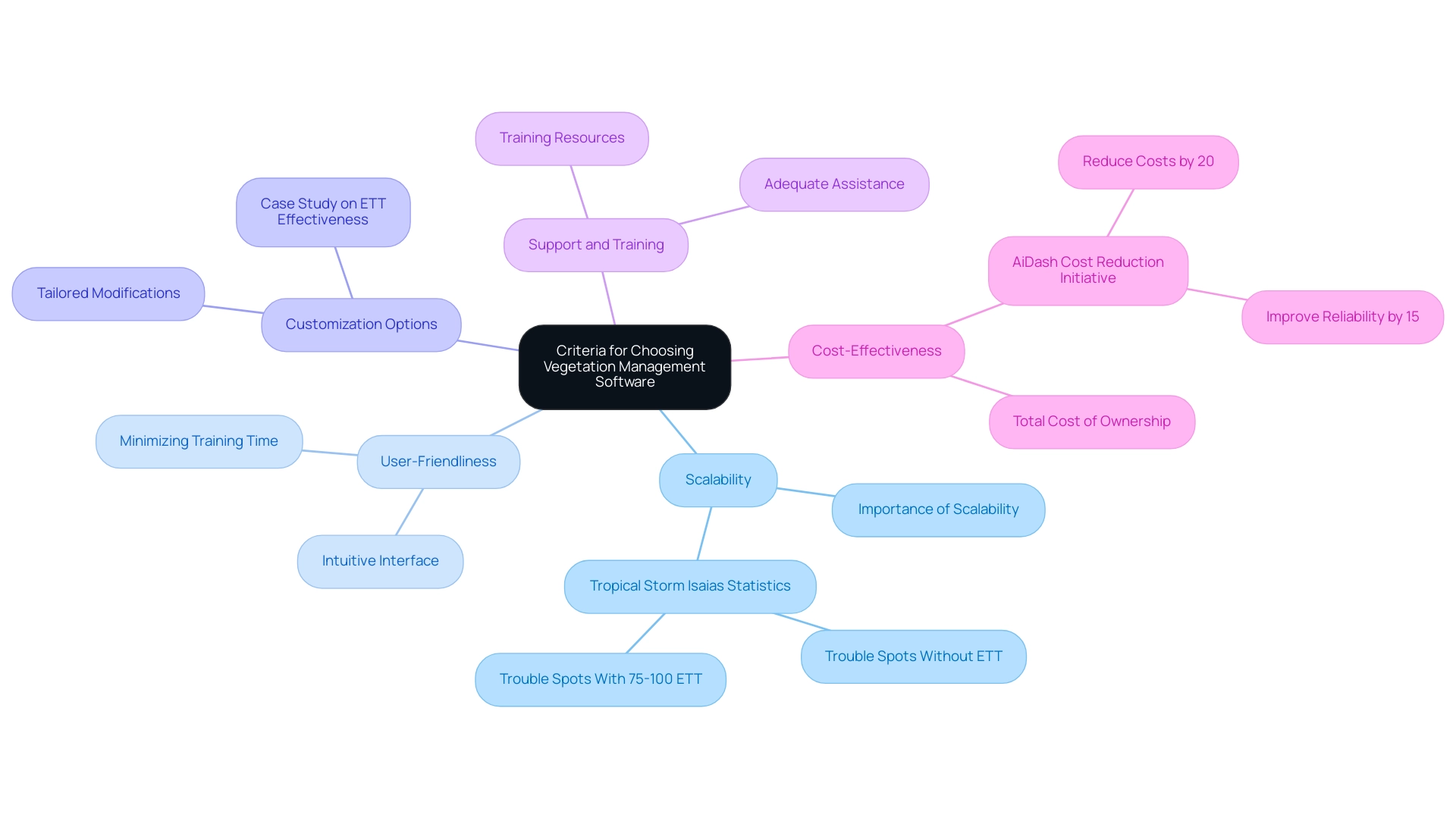
Leveraging Technology: The Role of AI and Drones in Vegetation Management
The integration of AI and drone technology is fundamentally transforming plant management, enhancing both efficiency and effectiveness in addressing plant risks. Among the primary benefits are:
- Automated Monitoring: Drones can rapidly cover extensive areas, enabling timely identification of vegetation issues before they escalate into significant problems. This proactive strategy is essential, particularly given that the economic harm from outages associated with plant life and severe weather can amount to billions of dollars each year.
- Insightful Analysis: By employing sophisticated AI algorithms, organizations can assess information collected from drones, satellite imagery, and other sources to accurately forecast plant growth patterns and evaluate related risks. For example, the case study titled "Pinpointing Risks by Optimizing and Combining Information Sources" demonstrates how the application of AI to satellite information, when combined with drone imagery and LiDAR, offers a targeted approach to recognizing plant risks. Anniek Schouten emphasizes that
Understanding and leveraging the available data allows companies to get grip on social, environmental and economic risks,
which highlights the critical role of informed decision-making in plant oversight.
- Cost Reduction: The use of vegetation management software for the automation of monitoring and analysis tasks significantly lowers labor costs while simultaneously improving response times to vegetation-related challenges. This efficiency not only streamlines operations but also contributes to more dependable grid oversight.
By integrating these advanced technologies into your plant care practices, you can greatly improve reliability and safety, ultimately maximizing land use and promoting long-term sustainability.
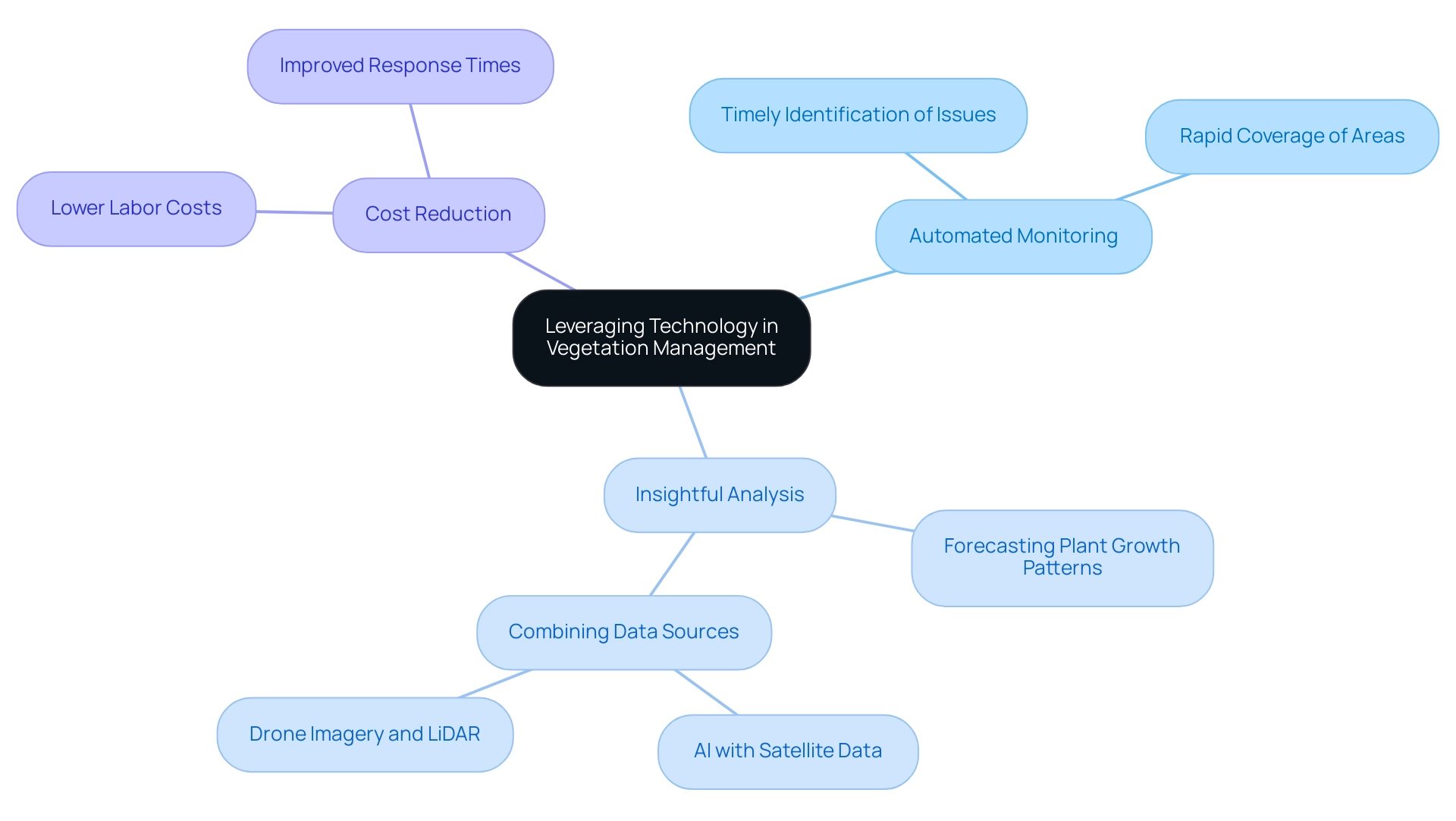
Integrating Software into Utility Operations: Best Practices
To effectively integrate vegetation management software into your utility operations, adhere to the following best practices:
- Conduct a Needs Assessment: Begin by identifying specific operational challenges that your utility faces. Understanding these challenges is crucial for determining how vegetation management software can effectively address them, ensuring that you select a solution that meets your unique needs.
- Engage Stakeholders Early: Involving key personnel in both the selection and implementation processes is vital. Early engagement fosters buy-in and addresses any concerns, ultimately leading to smoother integration and a higher likelihood of success. Stakeholder engagement significantly influences the overall effectiveness of system implementation.
- Develop a Training Plan: To maximize the system's capabilities, ensure that all users receive comprehensive training. A well-structured training program will empower your team to utilize the vegetation management software efficiently, which will enhance productivity and reduce the learning curve.
- Establish Clear Information Management Protocols: Define systematic approaches for how information will be collected, stored, and shared. Implementing robust data management protocols maintains data integrity and accessibility, which is essential for making informed decisions and optimizing operations.
- Monitor and Evaluate Performance: Regularly assess its impact on operational efficiency. Continuous monitoring through vegetation management software allows you to identify areas for improvement and make necessary adjustments, ensuring that the software continues to meet your utility's evolving needs. Case studies, like the one named "Enterprise Systems Integration and Proposed IoT-SCADA Architecture," demonstrate how effective analytics can result in improved load forecasting, reduced energy losses, and enhanced grid reliability for utility companies, highlighting the significance of continuous assessment.
Incorporating tools like ApiX-Drive can simplify this process further. As noted,
Try ApiX-Drive for free and make sure that the online connector in 5 minutes of setting up integration will remove a significant part of the routine from your life and free up time for you and your employees.
Utilizing such tools enhances performance and security through dedicated Pods, which provide isolation that boosts performance and security, allowing for seamless integration and automation without extensive coding or technical expertise.
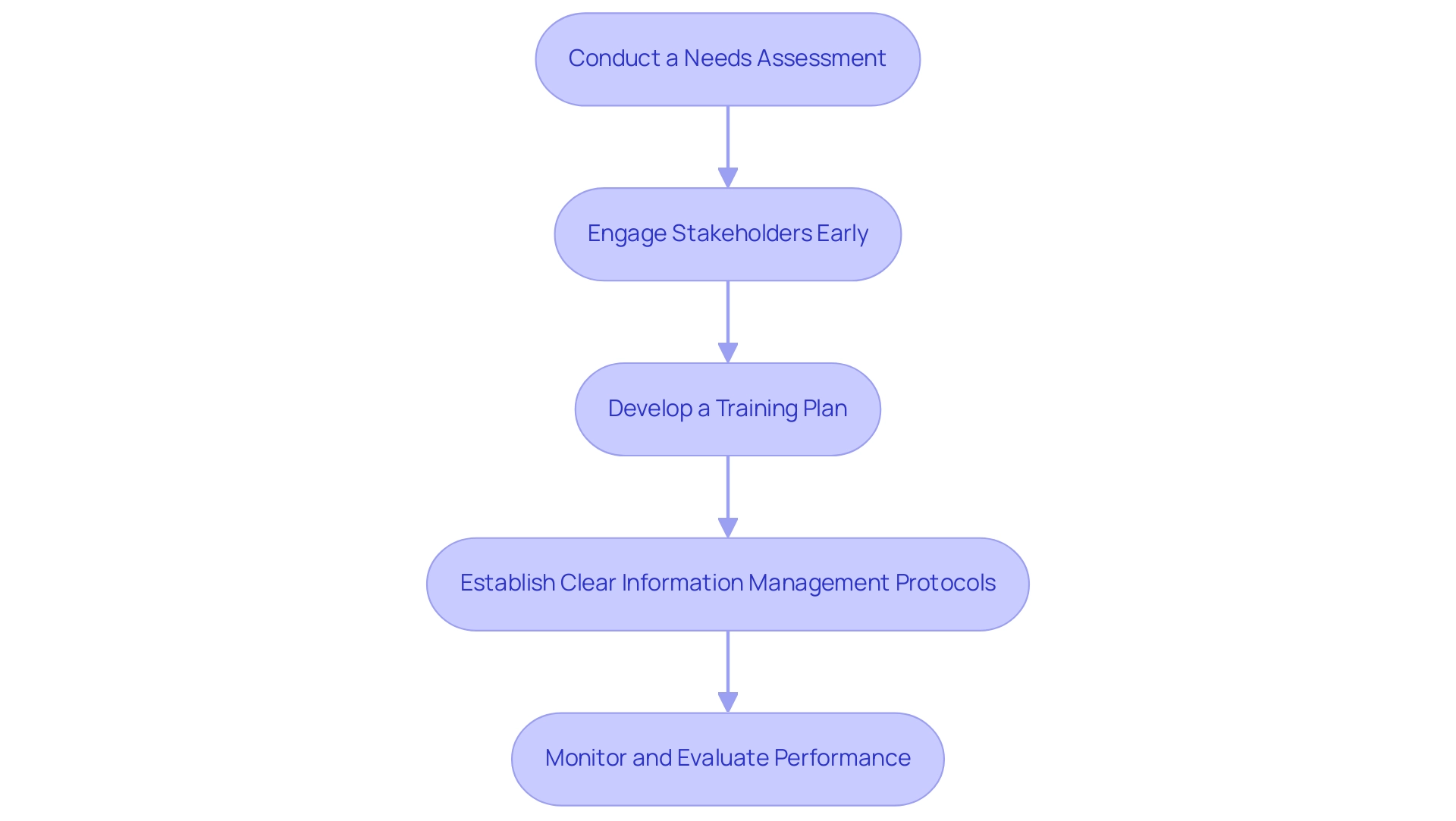
Future Trends in Vegetation Management Software: What to Expect
The progress of plant care is set to be greatly affected by various important trends in application development:
- Predictive Analytics: Employing data analysis to foresee plant growth and possible issues will be increasingly essential. According to a study by General Electric, data-driven visual intelligence can lower plant care expenses by as much as 20%, and up to 30% for unexpected power outages related to tree interference. This predictive ability not only boosts operational efficiency but also reduces risks related to plant care.
- Improved User Interfaces: The design of plant care applications is anticipated to advance, showcasing more intuitive interfaces that enhance user experiences. This enhancement will assist users in navigating intricate data and making informed choices more effectively.
- Integration with Smart Grid Technologies: As utilities increasingly adopt smart grid solutions, the need for plant control applications to integrate seamlessly with these systems will become essential. This integration will enhance overall operational effectiveness and ensure that plant care strategies align with broader utility oversight goals.
- Sustainability Features: There is a growing emphasis on tools that prioritize environmental impact assessments and sustainability practices. Organizations will benefit from software that not only oversees plant life effectively but also conforms to ecological standards and public expectations, especially considering the rising opposition to chemical herbicides and worries regarding invasive species control.
The plant life oversight software market is anticipated to expand at a CAGR of 7.1% during the forecast period from 2022 to 2029, highlighting the growing significance of these trends. However, the industry faces challenges, including public resistance to chemical herbicides and the need for effective control of invasive species.
Technological advancements, particularly in monitoring technologies like LiDAR, are driving growth in this sector.
For instance, AiDash's strategic investment in enhancing its Intelligent Plant Care System exemplifies the trend towards integrating advanced technologies in plant oversight. Staying ahead of these trends is crucial for organizations aiming to optimize their vegetation management processes using vegetation management software while adapting to the evolving landscape of technology and environmental responsibility.
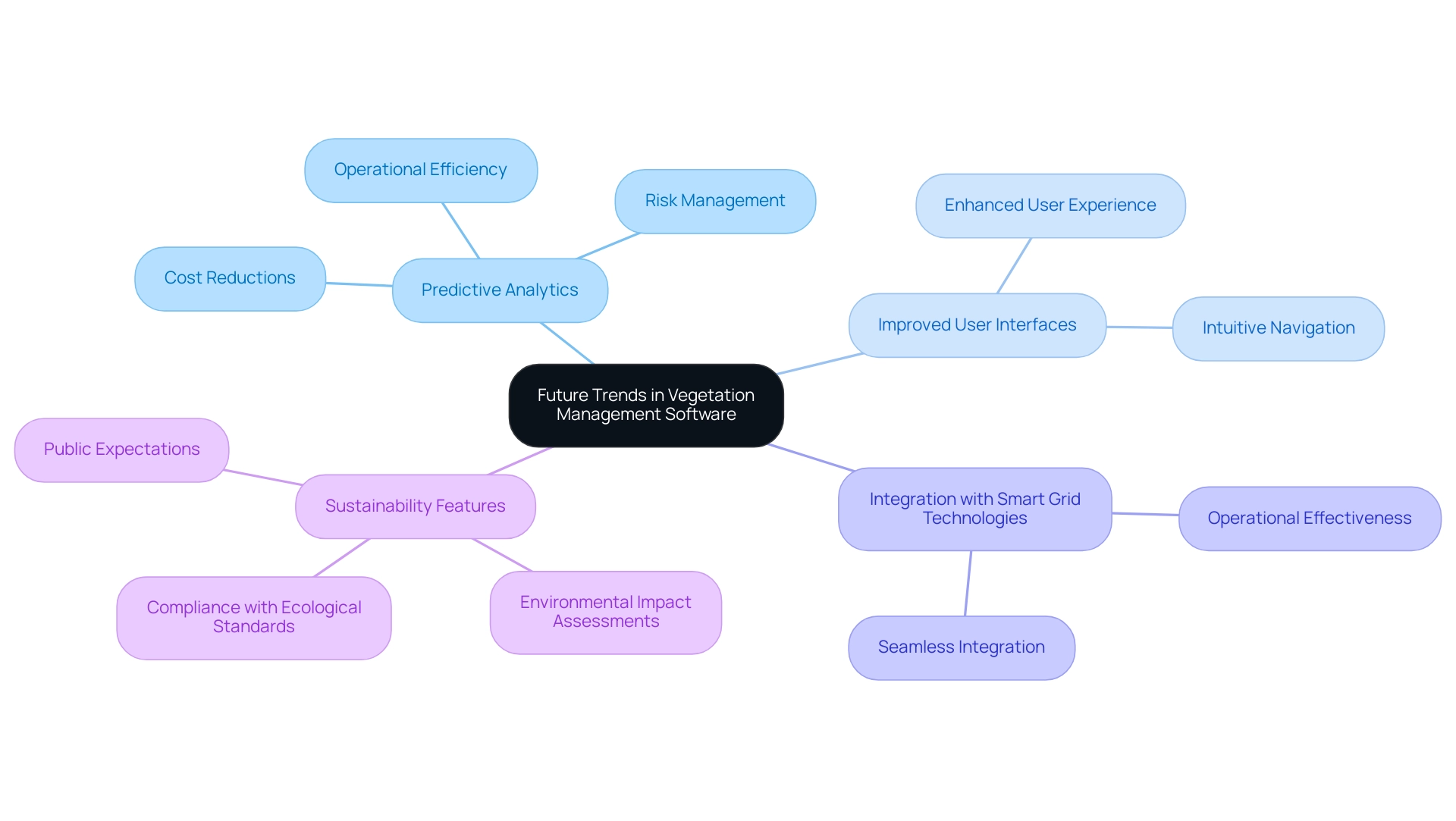
Conclusion
The exploration of vegetation management software reveals its transformative impact on utility operations, emphasizing the necessity of efficient oversight in an increasingly complex environment. Key benefits such as advanced mapping capabilities, data analytics, and the integration of AI and drone technology highlight how these tools enhance operational safety, compliance, and cost-effectiveness. The ability to visualize vegetation in relation to infrastructure not only streamlines planning but also plays a crucial role in preventing outages and ensuring regulatory adherence.
Selecting the right software is paramount, and organizations must consider criteria such as:
- Scalability
- User-friendliness
- Customization options
to align the solution with their specific needs. The integration of vegetation management software into utility operations requires a strategic approach, including stakeholder engagement and comprehensive training, to ensure successful implementation and ongoing performance evaluation.
Looking towards the future, trends such as:
- Predictive analytics
- Improved user interfaces
- Sustainability features
will shape the evolution of vegetation management software. As the industry adapts to technological advancements and increasing environmental responsibilities, organizations must remain vigilant in leveraging these tools to optimize their operations. The continued growth of this sector underscores the critical importance of effective vegetation management in safeguarding infrastructure and promoting sustainable practices.
Frequently Asked Questions
What are the benefits of using vegetation management software?
Vegetation management software improves operational efficiency, safety, and regulatory compliance. Key benefits include cost savings, enhanced planning through mapping and GIS capabilities, data analytics for risk management, integration with existing systems, and mobile accessibility for real-time information gathering.
How do mapping and GIS capabilities contribute to vegetation management?
Mapping and GIS capabilities allow for precise visualization of vegetation in relation to infrastructure, leading to effective planning and management. This can result in annual cost savings of up to 21.7% and a return on investment of 74.1%.
What role does data analytics play in vegetation management?
Data analytics helps evaluate plant growth trends, enabling proactive risk oversight and minimizing costly outages. Companies utilizing data-driven visual intelligence can reduce plant care costs by up to 20% and potentially save 30% on unplanned power outages caused by trees.
Why is integration with existing systems important for vegetation management software?
Integration with existing systems ensures seamless communication between operational tools, maximizing the effectiveness of vegetation oversight strategies and improving overall efficiency.
How does mobile accessibility benefit vegetation management?
Mobile accessibility allows for the collection of field information and real-time updates, which is crucial in dynamic environments where immediate decisions are necessary.
What limitations are associated with vegetation management software?
Limitations include resistance to chemical herbicides, high implementation costs, concerns regarding invasive species oversight, and data privacy issues.
How can augmented reality (AR) and virtual reality (VR) technologies enhance vegetation management?
AR and VR technologies improve data collection and safety training within utility landscape oversight, leading to greater operational efficiency and enhanced safety training for plant care teams.
What criteria should be evaluated when selecting vegetation management software?
Key criteria include scalability, user-friendliness, customization options, support and training, and cost-effectiveness.
Why is scalability important in vegetation management software?
Scalability ensures the software can evolve with the organization, accommodating increased data volumes and operational demands, which enhances the overall effectiveness of vegetation management strategies.
How does user-friendliness impact the effectiveness of vegetation management software?
An intuitive interface minimizes training time and promotes user adoption, allowing teams to implement and utilize the software's capabilities efficiently, ultimately leading to improved operational outcomes.
What is the significance of customization options in vegetation management software?
Customization options allow the software to be tailored to specific workflows and reporting requirements, enhancing operational efficiency and ensuring the system meets unique organizational needs.
Why is support and training from the provider essential for vegetation management software?
Adequate support and training resources maximize the system's potential, reducing downtime and enhancing user experience during implementation.
What should organizations consider regarding cost-effectiveness when selecting vegetation management software?
Organizations should assess the total cost of ownership, including licensing, maintenance, and upgrades, to ensure the software fits within their budget while balancing cost and functionality for effective plant care.

